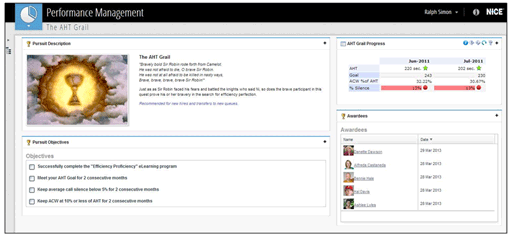I’m of two minds on this, I guess, because I have seen software/interface programs designed at upping the ante on feedback and engagement. Many of them are sleek and well-designed, and I think there might be decent adoption rates and maybe even a few ideas coming through to the top levels, getting vetted, and becoming a program. I got a job offer from Vocoli back in May; in hindsight I’m glad I didn’t take the job because I like what I’m doing and where I’m at now, but that was a tough period for me and I did consider the idea of grabbing it. (They essentially run a digital suggestion box platform, FYI.) I’ve done a bunch of freelance here and there for sites that specialize in the same general concept.
One time, we moved an article over to Huffington Post and one of the comments stuck with me: “You can’t solve a people problem with a software interface!” I actually think that’s mostly true.
This article mostly gets it right: it’s much less about “What tool can we buy?” and much more about “How can we make our managers more effective?” although most companies are trained to immediately think “What tool can we buy?” first and think about manager effectiveness somewhere around Step No. 27. After all, products and processes mean more to most orgs than their people.
We’re kind of at a tipping point with management right now as the Boomers age out, the Ys assume more managerial roles, and the millennials become the dominant force in the workplace (these groups are all human beings at core, so the differences are less stark than business journalism will have you believe):
- Everyone believes they’re busy all the time.
- Managers often feel so busy that they don’t “have the time” to respect their employees.
- Most of them aren’t even sure what motivates their people.
- (Or their strengths.)
- Everyone just chases deliverables at work, predominantly.
- And remember: they’re very busy. Slammed, even.
You know what happens when you introduce a software tool or interface into that equation? People assume “Oh shit, this is something else I need to keep up with?” Then if there’s no follow-up — which there likely won’t be, because this is an engagement issue and not a revenue issue — the managers who were once told “This new tool is a priority!” will start to gradually slack off on it.
Case in point: had a friend at a company that tried to roll out Yammer as a way to reduce (a) e-mail and (b) the 10 different places where different departments were sharing files or information based on what mattered to them. They were told for a few weeks “This is a priority.” After 3-4 weeks, that dropped off and their Yammer basically became a ghost town. If you went and talked to managers, they’d say “I don’t have time for that shit. It’s just another thing to keep track of!”
Remember: most people view work as overwhelming as is. Why add more? And especially why add more around the topic of “employee engagement,” which is fluffy — meaning that the follow-up will drop to zero within a month?
If you want real engagement, don’t buy a tool. Instead, think of these three concepts:
- Leadership and management should be redefined with a focus on coaching.
- Managers should block time in their calendars to simply walk around and talk to people.
- When they do that, they should ask for feedback on projects and processes.
That’s it. Redefine what “management” is, talk to more people instead of rushing to meetings, and ask for feedback. Not massively complicated.

This is great advice, but the intent should be more than just adopting functional kaizen. The best possible outcome comes when top-down “management ” lessens and servant “leadership” of everyone as impact makers and even decision makers at all levels strenghens. Management can’t go away, its how the ship stays on course, but it should be the little brother kpis and metrics to the everyone’s being valued as the big brother hero.
Think about it, that’s why the leaders would walking around – ‘listening’ – and that’s why the subordinates would believe their contributions weren’t so… subordinate. That’s when the magic happens! That’s when processes get improved by thoses “doing” the work and delvering the results as one. And that’s when tools get adopted for the reason of: “this is what I need” to make that “improvement I suggested” or my “team members sugessted” because I or we “think” we need it to make the change “I or we” deemd appropriate. Ya, that’s when the magic happens… when “management” lessens and servant-leadership strengthens.
That is truly when “the magic happens,” but a lot of people don’t get that.